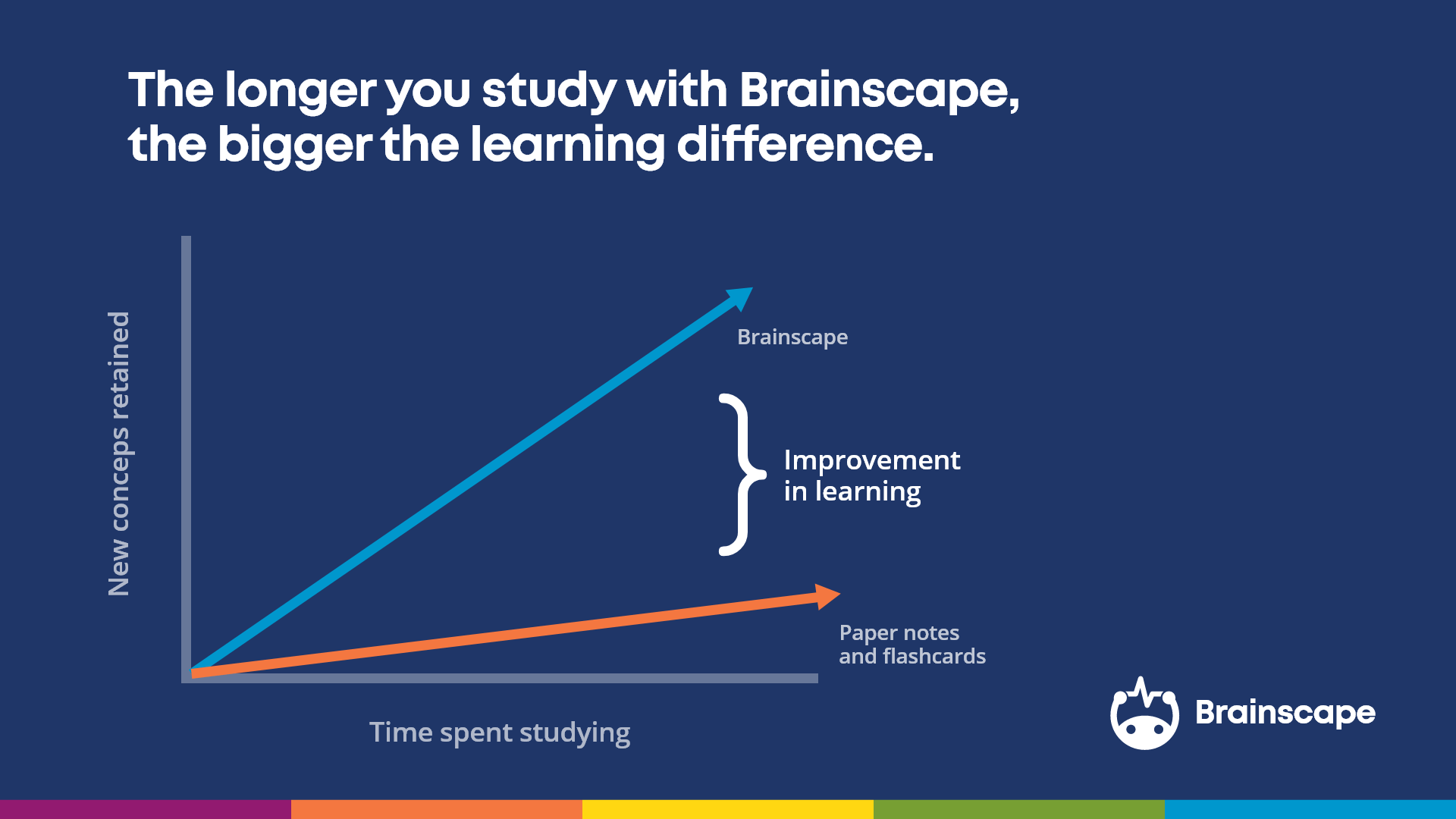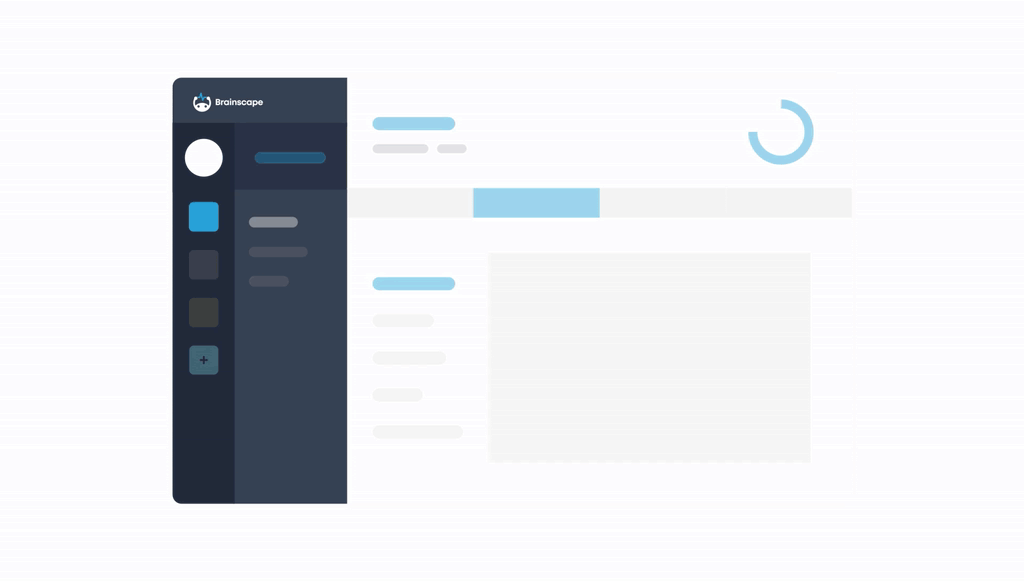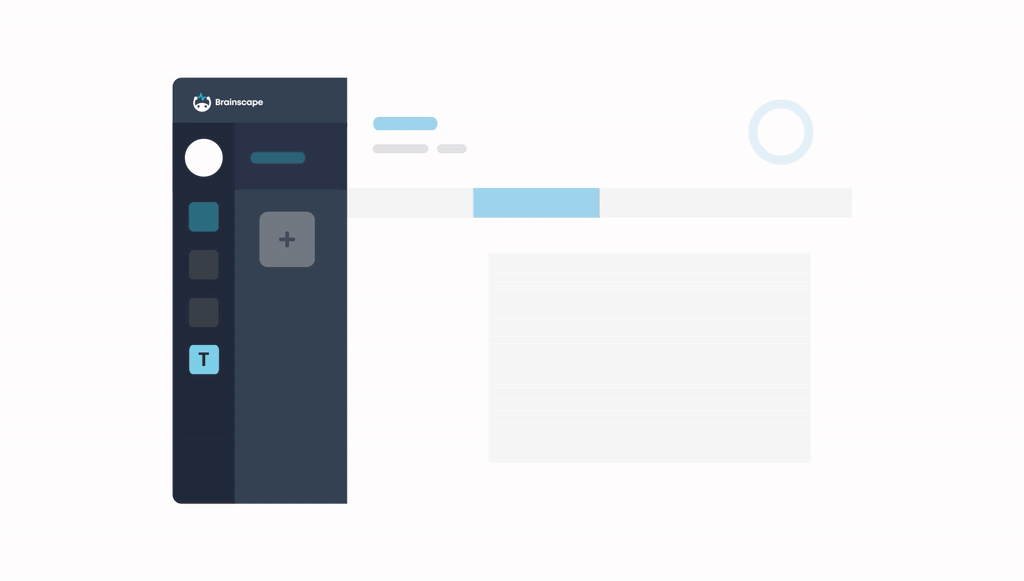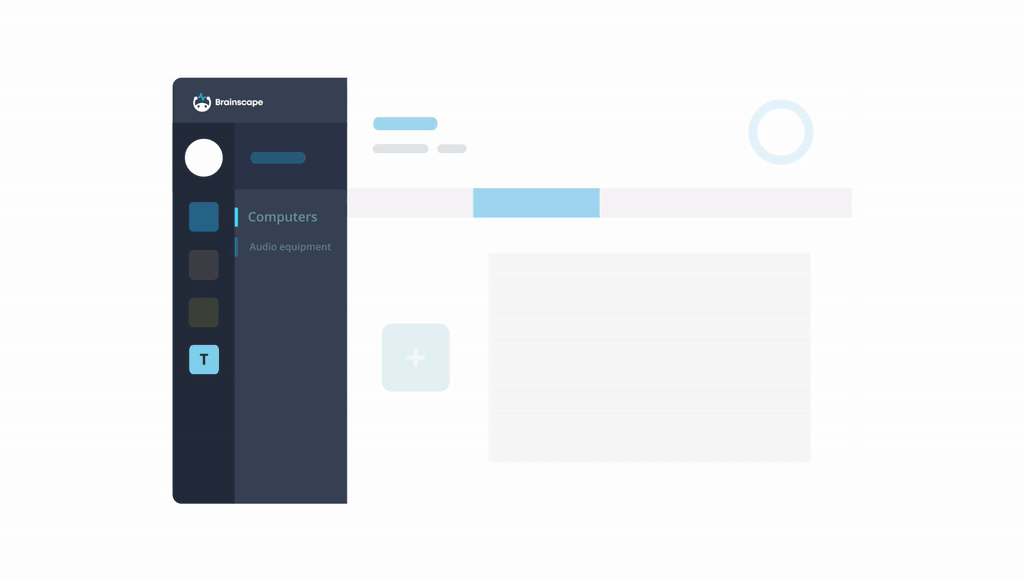In 2015, employee development was a $107 billion industry, according to a Global Industry Analysis. That’s around the same amount of money rock band Mötley Crüe spent on Jack Daniels in the 80s: a staggering amount if you knew just how drunk they were all the time.
By 2025, however, investments in employee development are projected to triple to $325 billion.
With such mind-boggling investments of money going into employee development, you’d think that the format of delivery would have been perfected to a fine art by now. But it hasn’t been.
Far from it.
Too many employee development programs plod along the same paths cut by the brick-and-mortar institutions that have come before them. The only thing that seems to change is the content of the education itself and perhaps the addition of some pretty bells and whistles to the software.
“If it ain’t broke, don’t fix it,” they say.
Well, it is “broke” and we’re going to fix it, right now. Because if happier employees, better sales, stronger brand credibility is important to your company, effective employee development should be at the top of the list of your priorities. Not to mention all the money you can save by avoiding overly expensive eLearning software
What we'll cover in this article ...
- The problem with today’s eLearning strategies
- The broken delivery of employee development instruction
- What’s missing from your company’s L&D strategy?
- How Brainscape overcomes these eLearning shortfalls
- Case study: Using Brainscape as a powerful employee development eLearning strategy
- Effective and inexpensive employee development with Brainscape
The problem with today’s eLearning strategies

The biggest and most pervasive problem with so many companies’ online employee development programs is how they are delivered.
What’s the biggest mantra high school teachers and college professors ram down students’ throats?
Don’t stick gum under the table?
No! It’s that cramming for exams doesn’t work. Picking up your books three days before your exam and spending full days saturating your brain with information is a terribly ineffective way to study. You’re lucky if you pass.
You certainly won’t perform well against the hundreds if not thousands of other students across the country sitting down to exactly the same exam. And do you really want to compete with them when it comes to interviewing for the same job?
No, cramming doesn’t work.
While your brain is an incredibly complex tool and can learn to do just about anything, from juggling oranges to piloting spacecraft, it has finite memory resources, particularly short-term memory resources.
With repetition and re-exposure to the same information, your brain will eventually remember it without help, but three solid days of study isn’t going to achieve that.
This is why the best way to approach learning something—whether it’s the names and faces of your client’s executive team or the specs of the latest product launch at work—is to:
- Take your time, and
- Re-expose yourself to the information at spaced intervals so that you’re not simply forgetting what you learn an hour, a day, or a week later.
This latter point is referred to as “spaced repetition”, and it’s a pivotal cognitive science concept that almost every employee development program wholly neglects to leverage in the delivery of their content.
This brings us full circle to the problem underscoring most eLearning platforms: the method of delivery is exactly the same as those soul-destroying seminars or online courses employees are periodically forced to attend.
You know the ones: You sit-down, are force-fed content (a training video, a presentation, a booklet, etc.), and half-heartedly complete whatever assignment you’re given. Then you skedaddle home or sign out of the program, relieved that it’s over with.
In one ear and out the other. Now, onto more important matters: “Mmmm ... jelly donuts.”
It’s a broken system.
The broken delivery of employee development instruction
All-too-often, companies sign their employees up for one-day, three-day, or one-week workshops or seminars in an effort to get the training “over with” so that everyone can move on, magically more awesome than they were before.
Don’t get me wrong: the purpose behind these programs can be critical for advancing workers’ capabilities, skills, and knowledge.
From onboarding, company policies, and product knowledge to sales techniques, customer relations, and compliance, there is so much that good employees need to know these days.
But it’s little use investing money in this education if employees don’t remember what they learn.
How can they, when an entire book’s worth of information is presented in such a short amount of time? How are these mere mortals supposed to remember everything, just based on a glorified set of PPTs and an expensive trainer who recycled his dad jokes for the 67th time this year?
Unless you have an eidetic memory and are able to recall, word-for-word, Dostoevsky’s Crime and Punishment, which you read thirteen years ago, you’re pretty much screwed.
Also, let’s not forget that, in most cases, employees just want to get the training over with. They have other things to worry about.
Once again, considering the enormous amounts of money companies spend on employee development, we should be making darn sure these programs actually work. And yet, they don’t. Or, to be more generous: they don’t work nearly as well as they should.
What about bite-sized, micro-learning?
While the shift to online education in professional working environments has made employee development more convenient, the format of delivery is still pretty much the same as before.
This is even true for so-called "micro-learning" activities, where the content is delivered in bite-sized videos, tutorials, and modules rather than in one lumped load.
While the more atomic format is certainly more convenient to navigate for your specific purposes, most of the exercises are still single-exposure and linear in nature. Employees still read through the material or watch the videos all at once so that they can “check the box”, call it "done", and continue daydreaming about donuts, that hot guy/girl in Finance, and holidaying in the Bahamas (with that hot guy/girl in Finance).
Within a week, your team has likely forgotten most of the information, and within months, as much as 90% of it. Thousands of dollars of training down the drain.

Ultimately, the goal of employee education is to equip your staff with an elegant working knowledge of your company, its brand messaging, vision, policies, products, and services. This empowers them to be as productive as possible and to represent your company well when dealing with customers.
Employers think: "I want all my staff to be totally up to date with where our company is heading"
Employees think: "I’m too busy for this. I just want to get it over with and put it behind me."
We’ve spent ample time admonishing the wrong way to go about doing this. Now we’re going to talk about the right way. We’re finally going to answer the question ...
What’s missing from your company’s L&D strategy?

1. Employees don’t remember what they learn
The traditional delivery of content encourages employees to cram information over a single presentation or workshop. So while they might walk away having learned something, they tend to rapidly forget the new information in the ensuing days and weeks.
This may not matter quite so much if the employee is Sally from Accounting and the information pertains to customer relations, since Sally doesn’t deal very much with customers. However, if the employee is Roger from Sales, and he doesn’t know the company’s best practices for managing disgruntled customers, he runs the risk of forever losing that customer.
Sucks for Roger and sucks for the company’s revenue.
This is a trifling example of how the drop-off of memory over time might shortchange a company and its employees. On issues of compliance, legal, and safety policies, mistakes can become expensive (with a side order of litigation).
[See also: Does your eLearning use good cognitive science?]
2. Information can’t be referenced once the training is done
Once the presentation is over or the workshop is drawn to a close, that’s it. All that remains are a few empty coffee cups, some feverishly scribbled notes, and a lingering fart that Dave from I.T. dropped around the 45-minute mark.
And even if employees have been sent home with a booklet for reference’s sake, who on God’s green Earth would want to read through that again?
Unless a company threatens to test its employees on the course material after they’ve been trained, any reference materials are very likely going to end up in recycling or on the bottom of someone’s parrot cage.
3. Courses and eLearning software are expensive
The issue that sucks the most for companies is not only that traditional employee development programs are ineffective but that they are expensive.
Being creatives, instructional designers are happy to blow a million dollars on crafting the sexiest eLearning platforms they can envision complete with dozens of advanced (read: expensive) features.
This is wonderful, sure. But such advanced tools are, in many cases, superfluous; especially when all a company needs is for its employees to “memorize” a bunch of product specs, safety protocols, or menu items, etc. You may not be getting the best ROI from your eLearning investments.
4. The software itself is frustrating to use

All-too-often, training managers simply retrofit their old eLearning models into smaller screens in a bid to “keep up with technology” when, in fact, all they’re really accomplishing is creating an illusion of progress.
The content and format are the same. The only thing that’s different is the fact that employees are accessing the material on their mobile device, rather than that relic of a TV the company keeps in the basement, along with Dave and his flatulence.
As a consequence of this laziness / lack of investment / and/or bid to serve the needs of executives rather than the employees who will be using the training tools, teams frequently end up with cumbersome eLearning software that nobody likes, uses, or benefits from.
5. No metrics for gauging employee education
Many employee development programs and apps don’t provide companies with a measurable gauge on how well employees are learning or mastering the material.
Traditionally, the only way you know an employee has learned anything is when you see that knowledge in action. Since most companies don’t have the time to test employees before they sit down to do their jobs, there is a lot of faith involved.
I’m not encouraging formal assessment–I wouldn’t want to invoke the wrath of employees everywhere who thought they’d left the stress of exams behind them in high school and college.
Rather, I’m noting the lack of insight these eLearning platforms provide to the companies that purchase them. How do you know if your investment is paying off? You don’t. You just have to hope your employees are taking time out of their busy days to complete some requirements (with value that isn’t always apparent to them).
Sounds positively inspiring, doesn’t it?
6. Employees don’t benefit equally
The last point I want to make is the following: not everybody is academically inclined. Not everybody is good at memorizing information and not everybody emerged from school or college with the best learning methodology for remembering pages and pages of information.
In the context of the kind of employee development programs and apps we have been discussing, these employees would find themselves at a considerable disadvantage. And all because they aren’t as studious or have the same Grand Canyon-sized attention span as Sally in Accounting.
How Brainscape overcomes these eLearning shortfalls

We’ve taken a rather depressing whirlwind tour through all the possible facets that could be missing from your company’s eLearning strategy.
Now, it’s time for the good news.
What is the key to effective employee development? The answer is cognitive science and understanding how it can be leveraged to help your employees master essential information quickly, efficiently, and permanently. Then, they can get back to being productive (or rather more productive than before).
No need to hire a cognitive scientist to assist. Brainscape’s customizable employee training app provides the answer by achieving the following seemingly complex, cognitive concepts:
- Engaging active recall
- Fostering metacognition
- Implementing spaced repetition
As you’ll come to see, these concepts are actually pretty straightforward. In fact, you’ve probably been doing them your whole life without even realizing it.
Let’s take a closer look at these top cognitive science-based L&D recommendations and how Brainscape leverages them for successful employee development.
1. Engaging active recall
“Active recall” is your ability to remember things from scratch. When asked an exam question or faced with a tricky work situation, you actively dig into your memory bank and retrieve the information you need (as opposed to just "recognizing" it on a slide or a list of multiple choices).
This is the best way to learn new information because it means that once it is learned, you can pluck it from your cognitive coffers and offer it up in an exam or apply it to a real-world situation.
If this sounds fairly complex, don’t fret. You actively recall information all the time: the route home from work, your spouse’s birthday (hopefully), important phone numbers, your address, and how to do your job, etc.
There was once a time you had to learn all of these things. Now, they are so entrenched in your brain that you can actively recall them without Google having to come to your rescue.
Traditionally, however, people study passively by reading through notes and textbooks, and by watching videos and presentations. And while you may feel that you’re familiar with the material (upon the second or third review), that sense of familiarity is merely recognition and not recall.
There’s an important difference between recognition and recall. The one is a passing feeling of knowing the information (“passing” being the operative word there) and the other is a permanent internalization of the information, which can be used or recalled at a later date.
How can companies encourage employees to learn via active recall?
Companies should consider training delivery that frequently asks employees to repeat or recall concepts from scratch shortly after they are learned. The goal of this is to solidify each memory trace.
Whether this is achieved through periodic short-answer questions, essays, verbal evaluations, or self-assessment flashcards, eLearning investments that use active recall are more likely to promote deeper learning than those that rely on passive techniques.
Brainscape’s adaptive microlearning platform really pivots on encouraging users to engage active recall in order to successfully progress through the material. It does this by presenting a series of web and mobile flashcards with questions on the front and answers on the back.
Yes, flashcards.
“But aren’t flashcards for kids?”
Actually, no. They’re for people who are serious about mastering content-heavy subjects...and they work. Flashcards make information accessible in bite sizes and in a way that aligns with the brain’s way of remembering things. When the brain sees a cue, and digs deep into its memory to retrieve the required information.
[See also: Can digital flashcards transform L&D?]

This is what happens when users look at the questions on the front of the flashcards: They are compelled to recall the answers before looking at the answers on the back. They then rate their confidence in how well they knew the answers before turning the cards over.
If users view a question and are unable to pluck an answer from memory, they should self-assess their confidence as a 1. If, however, they actively recall the correct answer, they can self-assess their confidence as a 5.
For example:
“Er, I dunno the answer at all.” = 1
“Mm, I kind of know but am not that confident” = 3
“Ooo! I know the answer!” = 5
The reason this is important brings us to the second cognitive science-based recommendation for successful learning and employee development.
2. Fostering metacognition

How well do you know what you know?
This is called “metacognition”, which is self-reflecting on what you know and how well you know it. In other words: “thinking about your thinking.”
And, as it turns out, making people think about what they know (and how well they know it) really helps knowledge to stick.
In the context of Brainscape’s eLearning flashcard platform, users aren’t only compelled to actively recall information; they’re also compelled to assess how well they know the answer. This high-level reflection establishes a deeper cognitive pathway, making the information more memorable.
How can companies foster metacognition during employee development?
There are several activities that can be introduced to standard employee training that encourages them to think about what they’ve learned and how well they understand it.
Concept maps, for example, are rather popular. Employees are asked to draw visual representations of what they know about a particular topic and how each individual point is related to their peers. This builds a more holistic understanding, particularly when the concepts at hand are very complexly interrelated.
Another method of fostering metacognition (and active recall) is Brainscape. As discussed, users are compelled to rate their confidence in how well they knew the answer to the various flashcard questions.
This might seem like a rather odd thing to do but it achieves two very important outcomes. The first is that users think about their thinking, and this profound reflection improves the richness of their learning experience.
This brings us to our final cognitive principle ...
3. Implementing spaced repetition
Perhaps the most important component of a corporate eLearning strategy—or any learning strategy for that matter—is to ensure that difficult concepts are repeated a sufficient number of times before they slip away from a learner’s memory.
In the case of Brainscape, the flashcards that users rated a 1, 2, or 3 are repeated often until the user’s confidence in their ability to know the answer improves.
This is called “spaced repetition,” and it refreshes an employee’s memory of the information at optimal intervals for memory retention. With each repetition, his or her confidence in the answer improves until they’re able to actively recall the answer from scratch.
At the same time, the questions that employees were able to answer confidently (rating them 4s and 5s) are repeated less frequently. This is because repeating concepts in which users are confident is simply a waste of time.
In this way, Brainscape really optimizes the amount of time employees spend studying by minimizing repetitions of information they confidently know, and regularly repeating information they don’t until they master it.
Companies who use spaced repetition in their eLearning programs tend to enjoy a higher ROI from their technology and curriculum development, while maintaining happier employees who hold a greater respect for their L&D departments.
[Read Brainscape’s white paper on Confidence-Based Repetition]
Case study: Using Brainscape as a powerful employee development eLearning strategy
A technology retailer–let’s call it TechNerd–wants to create a mobile and online training program for its new sales associates. TechNerd has a dizzying number of departments from television, games, and audio to software, mobile, and more.
New employees not only need to learn (1) all the individual products and brands in each department but also how to (2) upsell by recommending combinations of products and (3) answer customer queries and complaints.
How can TechNerd make use of Brainscape to unleash far more prepared and effective sales associates upon its customers?
Here's a step-by-step:
Step 1: Create a class in Brainscape
TechNerd creates a “class” in Brainscape and calls it “TechNerd Sales 101”. In this class, employees will learn some unique tips for selling (and upselling) TechNerd’s products and for being an effective and likable interface between brand and customer.

Step 2: Create decks for various topics
Within this class, TechNerd creates individual “decks” of flashcards for all the topic areas it wants its sales associates to be trained in. For example: TVs, computers, tablets, phones, games, headphones & speakers, home theater, and more.

Step 3: Collaborate with experts
TechNerd shares its class with other collaborators and subject matter experts, who then create the actual flashcards for their “deck” of expertise.
For example, TechNerd might approach the departmental head of Gaming to create a deck of flashcards on selling their TV and computer games, consoles and controls. This is because they have an intimate understanding of what is required in order to effectively sell (and upsell) to customers who are browsing through this department.
They also know how to handle customers with various questions, issues, and complaints. And all of this valuable information can be translated into a deck of engaging, web and mobile flashcards.

Step 4: Share with employees
Once the decks have been filled with engaging, content-rich flashcards, TechNerd can share them with employees through a secure link. These are accessible via computer/browser, Brainscape’s mobile app, or tablet app.
An important feature of Brainscape Pro is that TechNerd’s “secret recipe” training materials for being an effective salesperson can be shared exclusively (and securely) with its employers. As such, the company can rest assured that its information won’t end up in the hands of its competitors.

Step 5: Track employee progress
TechNerd can then play God by using Brainscape to see how well its employees are progressing through the material. Key insights like how much time employees are dedicating to their training and what subjects they are having trouble with can be gleaned from TechNerd’s secret perch high up there in the Brainscape “control room”.
Understanding these metrics enables the company to improve its delivery of content and assist employees who might be struggling.
Important note: When checking in on employees, don’t grade their performance based on their self-rated "mastery". This will only encourage them to inflate their self-reported confidence levels after each question in a bid to impress.
Step 6: Make Brainscape a habit
Once employees are actively using Brainscape, TechNerd can tell them that it'll be checking in to see that they are studying a little each week. This encourages healthy habit building and memory retention.
Employees can also use Brainscape as a reference tool (so that it looks like they’re more active on their profile, which they will be—and learning in the process!)
Step 7: Collect employee feedback
Your most valuable source of information on how to improve your employees' L&D experience is to collect their feedback and, if warranted, deploy edits in real-time.
For example, should an employee notice an error in one of the flashcards, or have a better answer (or even just information they feel should be added) they can click the “Suggest Edit" button. This will send a message to the authoring team along with the user’s suggestion for that flashcard.
The class admin(s) can then make said edits in real-time and the new and improved flashcard/s will be immediately deployed to the computers and phones of any employees studying the content.
Done this way, it’s quick, simple, and totally free to constantly advance and fine-tune your company’s employee development training.
Effective and inexpensive employee development with Brainscape
Whether used during the onboarding process or for continued education, employee development is essential for advancing their proficiencies and knowledge. This should be the overarching intention of all eLearning programs but, as discussed at length, they, unfortunately, tend to fall short.
Brainscape’s adaptive learning platform is different. By leveraging the three key cognitive science-based learning principles of active recall, metacognition, and spaced repetition, your company can actually make good on its intention to help employees attain their full potential.
Plus, the gesture of investing in your employees, particularly by using a platform like Brainscape that is accessible, engaging, and fun to use, goes a long way for stoking morale.
The outcomes?
Well, they are happier employees, better sales, money saved on expensive software, and stronger brand credibility in the eyes of the customers who are impressed by the knowledge of your staff, like Roger in Sales, Derek in Finance, Sally in Accounting and, yes, even Dave in IT.
ALSO: If you have created flashcards you think you could sell outside your company, consider starting a small eLearning business as a side-hustle. Here are our tips for starting & growing an eLearning business.
